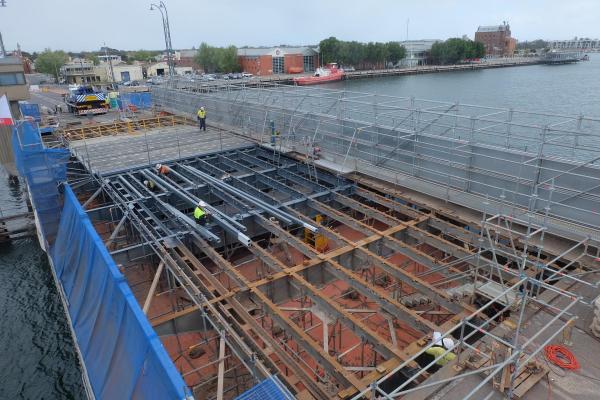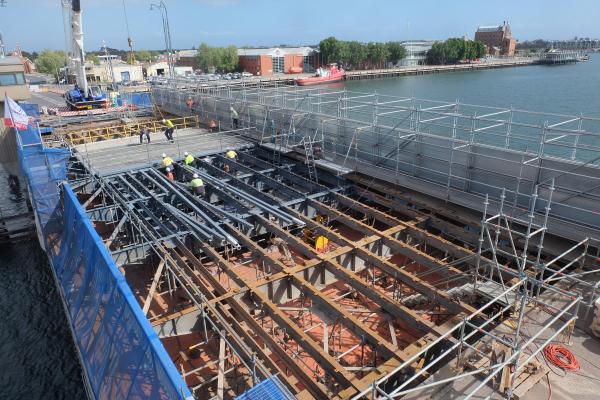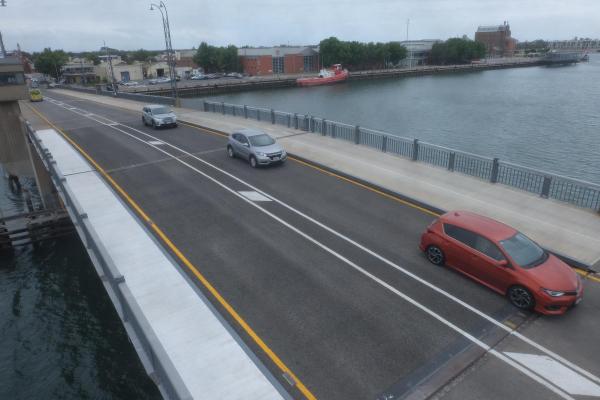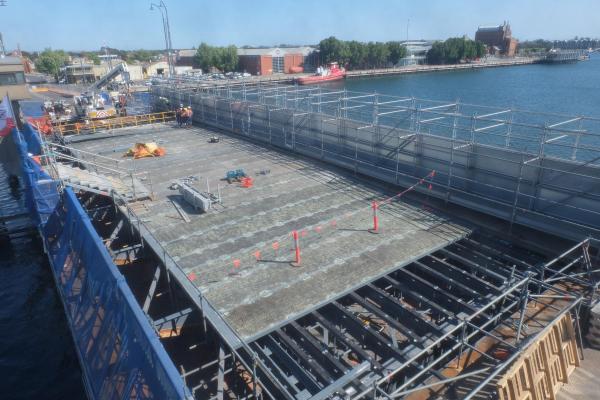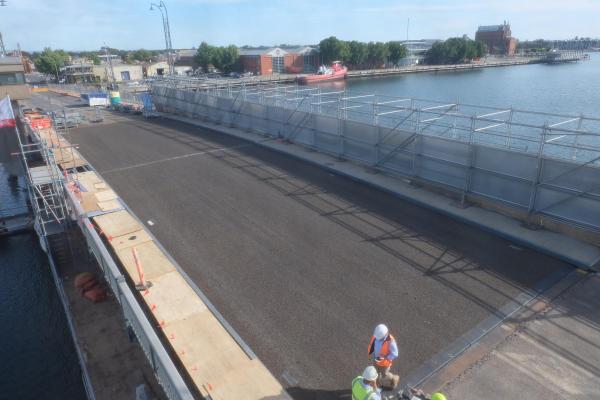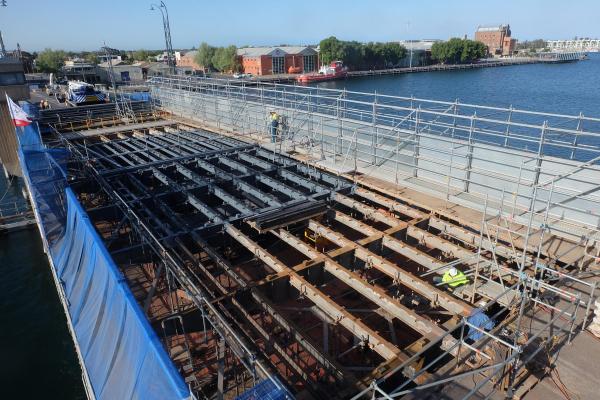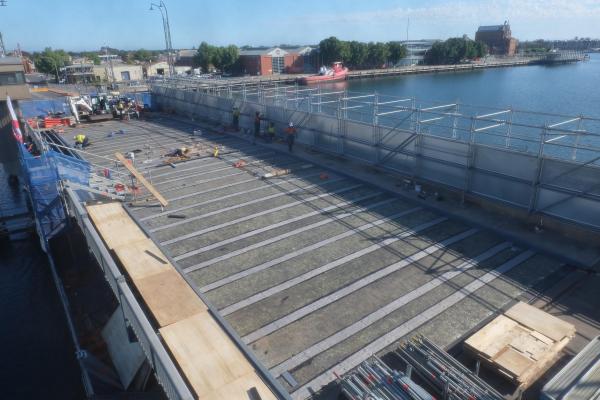Read on to discover how asset owners of the historic Birkenhead Bridge in Port Adelaide, South Australia saved on ongoing maintenance costs by using modern building materials to extend the life of the bascule bridge deck.
Birkenhead Bridge carries approximately 15,000 vehicles a day across the Port River. The bridge was constructed in 1940 and comprises nine spans totalling approximately 260 metres in length, with an average carriageway width of 15.8 metres. The spans include eight normal spans and a central double-leaf bascule span.
The bridge is listed on the South Australian State Heritage Register due to the significance of the bascule span which open to allow the passage of vessels beneath.
The timber running surface of the bascule span had deteriorated and required regular maintenance where defective or worn asphalt coated timber tiles were patched or replaced approximately 3-4 times per year.
Wallbridge Gilbert Aztec (WGA) was engaged by the South Australian Department for Infrastructure and Transport (DIT) to investigate and design an alternative bridge deck system for the bascule span. The objectives of the works were to improve safety for users of the structure, extend the life of the bridge asset and to provide ongoing safe access for water transports.
Part of WGA’s scope was to undertake an options study to assess potential structural systems for the deck replacement. Key criteria considered were deck weight, thickness, constructability, durability and cost. Weight was of particular importance given the limitations of the existing mechanical and electrical plant for the bascule span. In conjunction with DIT, the structural system selected for the deck replacement was Wagners Composite Fibre Technologies (CFT) 125 SHS decking system.
The new decking was installed on top of the existing steelwork with nominal HDPE packers, where required, to match the existing roadway surface. A minimal thickness deck wearing surface was installed on the new Wagners FRP decking. In order to confirm the satisfactory performance of the deck wearing surface during the bascule opening in summer conditions, Wagners CFT constructed a test panel including the deck wearing surface, heated to 60-degrees Celsius in an oven whilst positioned vertically (at 90 degrees), and then performed shear tests to simulate Austroads braking loads.
The works were successfully completed and the bridge opened to traffic in late 2020 with the construction performed by McMahon Services.
